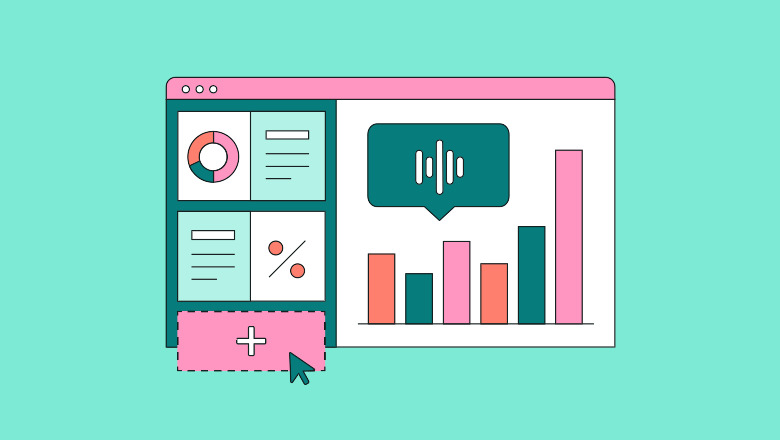Social media has become a crucial means for businesses to engage with their customers in the rapid and digital age we live in. By leveraging social media platforms, businesses can engage with their audience, build brand awareness, and drive more conversions. However, social media is not just a platform for businesses to broadcast their message; it is also an excellent source of consumer insights. Social listening is the process of monitoring and analyzing social media conversations to gain valuable insights into consumer behavior, preferences, and opinions. In this article, we will explore how social listening insights can help businesses gain actionable intelligence and improve their marketing strategies.
Understanding Social Listening Insights

Social listening insights is the process of monitoring and analyzing social media platforms to understand what people are saying about a particular brand, product, or service. Social listening involves monitoring various social media platforms such as Twitter, Facebook, Instagram, LinkedIn, and YouTube, to name a few. By analyzing social media conversations, businesses can identify customer needs, concerns, and preferences, enabling them to improve their products and services and provide a better customer experience.
Why Social Media Listening is Important for Businesses?
Social listening insights are essential for businesses because it enables them to understand their customers’ needs and preferences better. By monitoring social media conversations, businesses can identify emerging trends and stay ahead of the competition. Here are some of the key benefits of social listening:
1. Identify Customer Needs and Preferences
Social listening enables businesses to identify customer needs and preferences by monitoring social media conversations. By analyzing customer feedback, businesses can identify what their customers like and dislike about their products and services. This information can help businesses make data-driven decisions to improve their products and services and provide a better customer experience.
2. Monitor Brand Reputation
Social media is a platform where customers can voice their opinions about a brand, product, or service. Social listening insights enable businesses to monitor social media conversations to identify potential brand reputation issues. By identifying potential issues early on, businesses can take corrective action before they escalate and damage the brand’s reputation.
3. Identify Emerging Trends
Social media is a platform where emerging trends can quickly gain momentum. Social listening insights enable businesses to identify emerging trends early on, giving them a competitive advantage. By monitoring social media conversations, businesses can identify what their customers are talking about and stay ahead of the competition.
4. Improve Marketing Strategies
Social listening enables businesses to gain valuable insights into their customers’ behavior and preferences. By analyzing social media conversations, businesses can identify what type of content resonates with their audience, enabling them to create more effective marketing strategies.
How to Use Social Listening to Gain Actionable Intelligence?

Now that we understand why social listening insights are important let’s explore how businesses can use social listening to gain actionable intelligence. Here are some steps businesses can take to leverage social listening:
1. Define Objectives
Before businesses start monitoring social media conversations, they need to define their objectives. The objectives could be to identify customer needs and preferences, monitor brand reputation, or identify emerging trends. By defining objectives, businesses can focus their efforts and gain more meaningful insights.
2. Select the Right Tools
There are various social listening insights tools available, such as Hootsuite, Brandwatch, and AIM Insights, to name a few. These tools enable businesses to monitor social media conversations, identify trending topics, and analyze sentiment. Businesses need to select the right tool that suits their needs and budget.
3. Monitor Social Media Conversations
Once businesses have defined their objectives and selected the right tool, they need to start monitoring social media conversations. They need to track brand mentions, product mentions, and relevant keywords related to their industry. By monitoring social media conversations, businesses can identify customer pain points, preferences, and emerging trends.
4. Analyze Data
Social listening generates a vast amount of data, which can be overwhelming. To gain actionable intelligence, businesses need to analyze the data to identify key insights. They can use sentiment analysis to understand customer opinions and preferences. Businesses can also use topic modeling to identify trending topics and keywords related to their industry. By analyzing the data, businesses can gain valuable insights into their customers’ behavior and preferences.
5. Take Action
Finally, businesses need to take action based on the insights gained from social listening. By addressing customer pain points, businesses can improve their products and services and provide a better customer experience. Also, by creating content that resonates with their audience, businesses can improve their marketing strategies and drive more conversions. By taking action based on social listening insights, businesses can stay ahead of the competition and drive business growth.
Utilizing Social Listening Insights for Businesses
1. Customer Sentiment Analysis
By analyzing sentiment around their brand, products, or services, businesses can gauge customer satisfaction levels and address any issues promptly. Positive sentiment can be leveraged to reinforce brand loyalty, while negative sentiment presents opportunities for improvement.
2. Competitor Analysis
Social listening allows businesses to keep a pulse on their competitors, monitoring their online presence and identifying areas of strength and weakness. This enables companies to refine their strategies and stay ahead in the market.
3. Identifying Trends and Opportunities
Through social listening, businesses can identify emerging trends, topics, and conversations within their industry. By capitalizing on these insights, companies can tailor their offerings to meet evolving consumer demands and seize new opportunities.
Social Listening Tools
1. Mention
Mention is a comprehensive social listening tool that allows businesses to monitor brand mentions, track keywords, and analyze sentiment across various online channels. Its user-friendly interface and real-time insights make it a valuable asset for businesses of all sizes.
2. Hootsuite
Hootsuite offers robust social listening capabilities, allowing businesses to monitor conversations, engage with their audience, and track competitor activity. With customizable dashboards and reporting features, Hootsuite enables businesses to streamline their social media management efforts.
3. AIM Insights
AIM Insights is a powerful social listening platform that provides in-depth insights into consumer behavior and market trends. Its advanced analytics tools and customizable reports empower businesses to make data-driven decisions and drive meaningful outcomes.
Best Practices for Effective Social Listening
1. Define Goals and Objectives
Before embarking on a social listening strategy, businesses should clearly define their goals and objectives. Whether it’s improving brand perception or identifying market opportunities, having a clear roadmap ensures focused efforts and measurable results.
2. Monitor Relevant Conversations
Businesses should monitor relevant keywords, hashtags, and topics related to their industry to stay informed about consumer sentiment and market trends. By actively listening to their audience, companies can uncover valuable insights and stay ahead of the curve.
3. Engage with Your Audience
Social listening is not just about listening; it’s also about engaging with your audience. Responding to comments, addressing concerns, and participating in conversations humanize your brand and foster meaningful connections with your customers.
Challenges and Limitations
While social listening offers numerous benefits, it also comes with its own set of challenges. From filtering out noise to ensuring data accuracy, businesses must navigate various hurdles to extract meaningful insights from online conversations.
Future Trends
As technology continues to evolve, the field of social listening is poised for significant growth. AI-powered analytics, predictive insights, and advanced sentiment analysis algorithms are expected to revolutionize how businesses harness the power of social data.
Conclusion
In conclusion, social listening is a powerful tool that can provide businesses with valuable insights into their customers’ behavior, preferences, and opinions. By incorporating social listening into their marketing strategy, businesses can stay ahead of the competition and drive business growth.
At Aim Technologies, we provide advanced social listening solutions to help businesses gain valuable insights from social media conversations. Our platform offers real-time monitoring, sentiment analysis, topic modeling, and other advanced features to help businesses make informed decisions based on social listening insights.
If you’re interested in learning more about how AIM Technologies can help your business, request a demo today. Our team of experts will be happy to show you how our platform can help you gain a competitive advantage and drive business growth.
FAQs
What is social listening, and why is it important for businesses?
- Social listening is the practice of monitoring online conversations and analyzing them to gain insights into consumer behavior, preferences, and sentiments. It’s important for businesses because it allows them to understand their audience on a deeper level, track brand perception, identify emerging trends, and stay ahead of the competition.
How can businesses effectively utilize social listening insights?
- Businesses can effectively utilize social listening insights by defining clear goals and objectives, monitoring relevant conversations and keywords, engaging with their audience, analyzing sentiment, and using the insights gained to inform their marketing strategies, product development, and customer service efforts.
What are some common challenges faced in social listening?
- Some common challenges faced in social listening include filtering out noise from irrelevant conversations, ensuring data accuracy, dealing with large volumes of data, interpreting sentiment accurately, and staying updated with rapidly evolving trends and technologies.
Which social listening tools are recommended for businesses?
- Some recommended social listening tools for businesses include Mention, Hootsuite, AIM Insights, Sprout Social, and Talkwalker. These tools offer a range of features such as real-time monitoring, sentiment analysis, competitor tracking, and customizable reporting to help businesses gather actionable insights from online conversations.
What are the future trends in social listening technology?
- The future of social listening technology is likely to involve advancements in AI-powered analytics, predictive insights, natural language processing, and sentiment analysis algorithms. These technologies will enable businesses to extract deeper insights from social data, identify emerging trends more accurately, and make more informed decisions based on consumer behavior and preferences.


